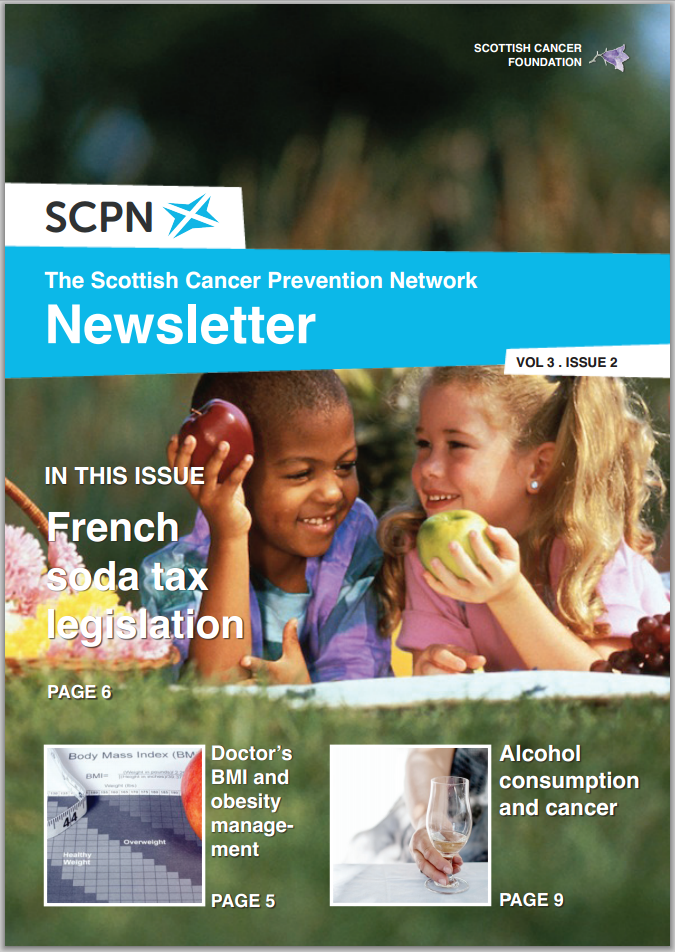
Cancer Prevention Includes Obesity Prevention… Let’s Care for our Children (and Adults)

16 Apr 12 |
In the UK, broadcast marketing of high fat, sugar and salt (HFSS) foods to children is restricted through rules put in place by the Broadcast regulator OFCOM. However, recent research suggests that these have minimal impact at limiting exposure, especially given that the rules DO NOT apply to many programmes that children watch (such as soaps and talent shows). The media has reported that our public health minister Michael Matheson has written to the UK health secretary asking for support for a UK wide ban on HFSS food advertising around programmes shown up to 9pm. It will be interesting to see a response especially given that when OFCOM did their initial consultation on the restrictions they ruled a 9pm ban out of the scope of the consultation declaring that such a ban “ would prevent adults from viewing advertisements for most HFSS food and drink products aimed at them”. Surely, it would also benefit many adults not to be bombarded with energy dense extras!
Clearly, many of the public care about childrens advertising with a recent poll by the Children’s Food Trust (http://www.schoolfoodtrust.org.uk/schools/projects/the-childrens-food-trust-and-school-food-trusts-childrens-food-conference) reporting that two-thirds (65%) of the 1,015 parents surveyed said there should be a ban on television advertising of products which were high in fat, sugar or salt before 9pm. Listening to parents/consumers/ is an important way for politicians to hear about views of their constituents and we need to find ways to make these voices heard. In Australia… using social media has improved an important route to making views about food marketing to kids heard as Lyndal Wellard (Nutrition Project Officer with Cancer Council New South Wales) describes below.
One of Cancer Council’s most recent initiatives is Fat Free TV (www.fatfreetv.com.au), an online campaign aimed at raising parents’ awareness about children’s exposure to junk food television advertising. The site also includes advocacy by prompting visitors to take action through an online petition asking TV networks to reduce junk food advertising to children.
The Fat Free TV Guide is a website that assists parents to reduce their child’s exposure to junk food ads by identifying which programs contain the highest or lowest number of junk food ads. Nutrient profiling was used to assess the foods advertised in popular TV shows, and then the shows were ranked according to the average number of junk food advertisements they contained. The average nutritional value of all the food advertisements in each TV show was calculated, to show how much energy, saturated fat, sugar and sodium a child would consume if they ate one serve of all products advertised in a show.
The campaign was launched using a social media ‘Mummy Blogger’ event, seeded to selected influential parent bloggers and accompanied by a traditional media strategy. The Mummy Blogger event included an overview of the issue, an interactive ‘walk through’ of the site and a chance for attendees to record videos of support, while tweeting and promoting the site through other forms of social media. This is the first time a social media launch has been used by Cancer Council NSW to engage the online community, and was a way of increasing reach to parents, the target audience.
The strategy was deemed a great success. The launch prompted posts on parenting, health, industry and academic blogs, and the #fatfreetv hashtag trended on Twitter in three Australian capital cities. In the first week the website received over 30,000 hits and over 100 people took advocacy action. Online monitoring showed that the majority of online commentary was supportive. Social media was the main driver of traffic to the website, and it fostered new relationships with members of the target audience. Over 100 traditional media items were published, including print, radio and marketing and public relations publications. The total audience exceeded 5.2 million people.
The social media approach used for the launch of Fat Free TV showed that engaging the digital community can be effective in promoting the campaign to a diverse audience and stimulating discussion. Social media is a relatively unexplored tool which can provide advocacy opportunities for food policy and other cancer-related issues.
Editors note: Ofcourse, broad cast advertising isn’t the only opportunity for HFSS foods to be marketed to children. The Scottish government agreed to “mapping and exploring possible actions to constrain non-broadcast marketing of high fat, sugar or salt (HFSS) foods to children” within the National Food and Drink Policy (launched in 2009!). Almost three years on it would be interesting to see what the government has done…
This article was originally published in the SCPN Newsletter, Volume 3, Issue 2.
Read the full issue here:

The SCPN Newsletter: Volume 3, Issue 2
In this issue, we cover the French 'soda tax' legislation, the BMI and obesity management of Doctors, alcohol consumption & cancer, and more.